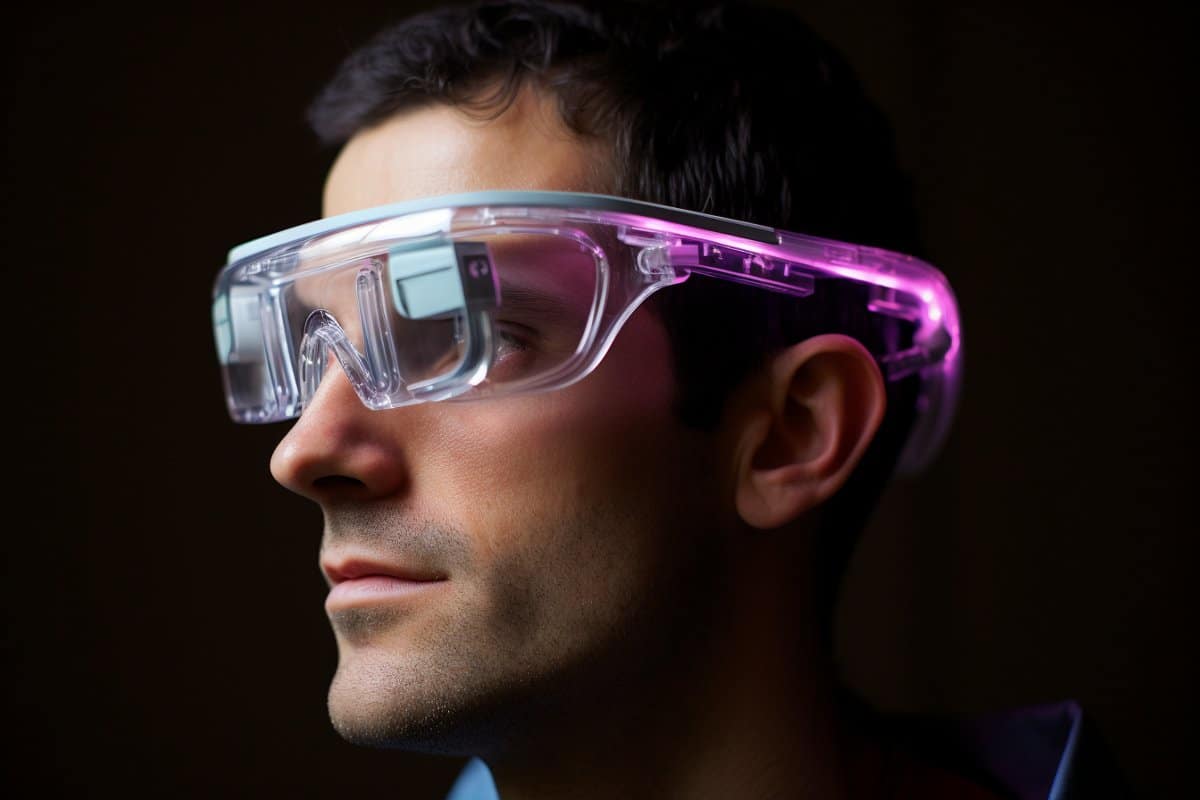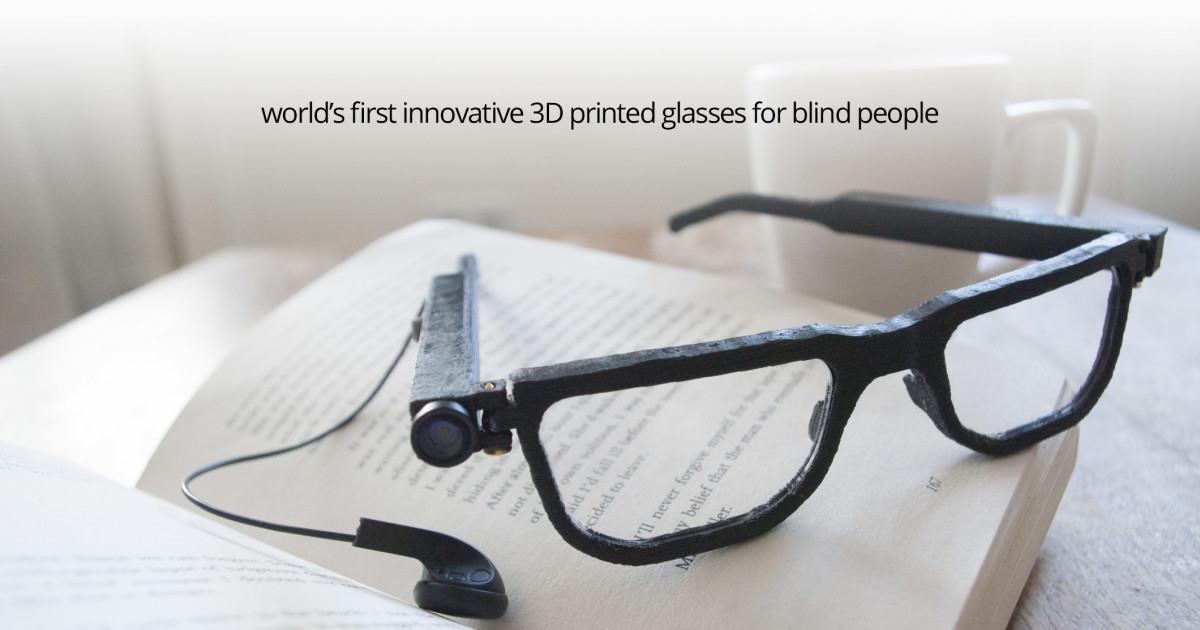Mobility Aids for Visually Impaired Users: Enhancing Independence and Navigation
Mobility Aids for Visually Impaired Users: Enhancing Independence and Navigation
Blog Article
Empowering Freedom With Assistive Innovation for the Blind
The combination of assistive innovation for people who are aesthetically damaged or blind represents a considerable development in promoting freedom and boosting high quality of life. With an array of tools-- from display readers to innovative tactile tools-- these innovations not just facilitate navigation and communication but likewise advertise social incorporation and engagement in numerous aspects of life.
Comprehending Assistive Modern Technology
Although assistive technology has actually developed dramatically for many years, its basic objective continues to be the same: to enhance the lifestyle for individuals with impairments, especially those who are blind or visually impaired. This modern technology incorporates a broad array of tools and tools that promote self-reliance and performance in daily tasks.
Assistive modern technology can be classified into low-tech and modern services, each designed to fulfill particular requirements. High-tech devices usually consist of software applications, specialized hardware, and flexible devices that make use of sophisticated innovation to provide support in different contexts. Conversely, low-tech services might include everyday things that are customized to enhance availability, such as magnifiers or tactile pens.
The combination of assistive modern technology into the lives of people that are blind or aesthetically hindered not just promotes freedom but likewise promotes social incorporation and engagement in academic and expert environments. By leveraging these innovations, customers can browse their surroundings, access details, and communicate effectively, thereby boosting their total top quality of life. Recognizing assistive innovation is critical for caretakers, experts, and supporters who aim to support people in maximizing their potential and attaining greater freedom.
Sorts Of Assistive Gadgets
Assistive devices for the blind and aesthetically damaged are crucial tools that enhance daily living by dealing with details obstacles come across by users. These tools can be generally categorized right into three main kinds: optical gadgets, digital tools, and sensory gadgets.

Sensory devices, such as Braille displays and tactile maps, give alternate means to receive info. Braille presents convert digital message right into Braille, allowing customers to go through touch. Tactile maps use spatial understanding through increased structures and lines, enabling better ecological understanding.
With each other, these assistive devices empower people with aesthetic impairments to engage more totally with their environments, advertising higher self-reliance and self-confidence in day-to-day tasks.

Effect On Life
The integration of assistive innovation into the lives of people who are blind or visually impaired considerably enhances their ability to navigate and interact with the globe around them. Instruments such as screen readers, Braille presents, and mobile applications assist in accessibility to details, enabling users to involve with digital material, communicate efficiently, and take care of everyday jobs separately.
Additionally, technologies like wise glasses and navigation apps provide real-time aid in unknown settings, enhancing flexibility and self-confidence. important link These tools make it possible for users to identify obstacles, checked out signs, and even identify faces, hence cultivating a sense of freedom in public spaces. Furthermore, home automation systems, which can be regulated with voice commands, permit individuals to handle their living settings more successfully, enhancing convenience and safety and security.
The effect of assistive innovation extends beyond useful jobs; it advertises social inclusion and psychological wellness. By linking the gap between people and their environments, these innovations encourage users to participate fully in area tasks, pursue academic possibilities, and take part in meaningful connections. Inevitably, the development of assistive innovation contributes in redefining the opportunities for people who are blind or visually impaired, causing an extra comprehensive and easily accessible society.
Success Stories and Testimonies

An additional effective endorsement originates from Mark, a recent college grad who utilized display analysis software application throughout his academic trip. This innovation enabled him to access training course materials and take part in conversations, ultimately resulting in his effective shift right into the labor force. Mark credit reports assistive innovation for empowering him to attain his career goals, stressing its function in leveling the having fun field for people with aesthetic problems.
In addition, neighborhood centers have actually reported raised engagement in their programs many thanks to the introduction of accessible electronic platforms. These systems have made it easier for people to connect, share sources, and support each other. These success tales jointly underscore the extensive effect of assistive innovation in cultivating self-reliance, enhancing top quality of life, and breaking down barriers for the visually impaired and blind area.
Future Trends in Assistive Tech
Emerging modern technologies are poised to change the landscape of assistive tech for individuals that are blind or visually damaged. Advancements in expert system (AI) and machine knowing are boosting the abilities of tools, allowing more intuitive individual experiences. As an example, AI-driven applications are significantly able to recognize objects and check out text aloud in real-time, giving users with important info concerning their surroundings.
Furthermore, improvements in wearable innovation are producing new opportunities for independence. Smart glasses geared up with augmented fact functions can overlay essential details onto the customer's field of view, promoting navigating and interaction with the setting. The combination of Net of Things find out (IoT) gadgets is improving ease of access in clever homes, permitting customers to manage appliances and obtain notifications with voice commands or tactile user interfaces.
The advancement of braille display screens and tactile feedback systems is additionally rising, advertising access to digital web content and boosting communication. As these modern technologies continue to progress, they assure to improve daily living, academic possibilities, and employment potential customers for people with aesthetic impairments. Constant cooperation in between technologists, customers, and advocacy teams will certainly be vital in making certain these advancements meet the requirements of the area effectively.
Final Thought
To conclude, assistive modern technology plays a content critical function in boosting the freedom of individuals that are visually impaired or blind. By offering crucial tools and sources, these modern technologies facilitate improved accessibility, navigating, and interaction to information, thereby promoting freedom and confidence. The transformative effect of assistive gadgets not only promotes efficient interaction with the atmosphere but also encourages social inclusion and participation in numerous facets of life, inevitably encouraging individuals to grow within their areas.
The assimilation of assistive innovation for people who are blind or aesthetically impaired stands for a considerable advancement in cultivating independence and enhancing high quality of life.The assimilation of assistive innovation right into the lives of individuals who are blind or visually hindered not just promotes autonomy yet likewise promotes social addition and participation in instructional and expert settings. Eventually, the development of assistive modern technology is critical in redefining the possibilities for individuals that are visually damaged or blind, leading to a more accessible and comprehensive society.
Lots of individuals that are visually damaged or blind have shared motivating success stories that highlight the transformative influence of assistive innovation on their lives.In conclusion, assistive technology plays a pivotal duty in enhancing the freedom of individuals who are visually damaged or blind.
Report this page